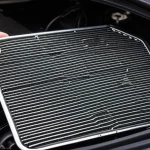Moto Guzzi V9 Bobber Engine Bolt Torque Specifications Overview
Understanding the engine bolt torque specifications for the Moto Guzzi V9 Bobber is essential for both maintenance and safe operation. Each bolt on the engine is designed to withstand specific torque levels, ensuring components remain securely fastened under stress while avoiding damage from overtightening.
Key engine bolt torque specifications vary by component, including cylinder head bolts, crankcase screws, and drivetrain fasteners. Using incorrect torque can lead to engine leaks, component failure, or compromised performance. For example, cylinder head bolts require precise torque to maintain a proper seal; too little torque may cause leaks, while excessive force may strip threads or warp parts.
This might interest you : Step-by-step guide: master the art of installing crash bars on your kawasaki versys 300
Always refer to official sources, such as the Moto Guzzi V9 Bobber’s maintenance guide or the manufacturer’s service manual, as they provide the most accurate and tested torque values. These documents detail step-by-step procedures and recommended tools, contributing to effective repairs and longevity.
In practical terms, investing in a quality torque wrench and following the engine bolt torque specifications closely will maintain your Moto Guzzi V9 Bobber’s optimal performance and safety, whether during routine checks or major engine work.
Detailed Engine Bolt Torque Chart
Precise torque values ensure engine reliability
When working with engines, consulting a torque specification chart is essential for applying the correct bolt tightness. This chart outlines the necessary torque for various engine bolt locations to prevent damage or loosening over time. Using the right torque prevents stripping threads and ensures the engine components seal and function properly.
Typically, torque is expressed in both Newton meters (Nm) and foot-pounds (ft-lb). For instance, cylinder head bolts often require higher torque values — around 90-110 Nm (65-81 ft-lb) — due to the critical sealing function they serve. In contrast, bolts for components like valve covers may only need 10-20 Nm (7-15 ft-lb). Knowing both units is important because mechanics and manuals use different systems, but both specify the same precise torque levels.
Engine bolt location charts detail which bolts require specific torque and in which order tightening should occur to avoid warping. Always follow manufacturer guidelines for each engine’s torque specs; even slight deviations can impact engine performance.
For hands-on projects, having a detailed torque specification chart including engine bolt locations and torque values in Nm and ft-lb helps ensure consistent, safe assembly.
Engine Bolt Torque Sequence and Diagrams
Understanding the torque sequence for engine bolts is essential to secure the Moto Guzzi V9 Bobber’s engine properly and avoid uneven stress. The torque sequence refers to the specific order in which bolts should be tightened to ensure even pressure distribution. This prevents warping and sealing issues, which are critical for engine longevity and performance.
A typical torque diagram for the Moto Guzzi V9 Bobber will clearly show the locations of all primary engine bolts, numbered in the exact tightening order. Following this order, usually starting from the center bolts and moving outward in a crisscross pattern, ensures balanced clamping force.
Manufacturer service manuals provide precise torque values and sequence charts that specify how to tighten the bolts. They emphasize gradual tightening in stages, for example, starting at a lower torque setting and then increasing to the final specification. This two or three-step process reduces the risk of over-torquing or stripping bolts.
Using Moto Guzzi V9 Bobber graphics can greatly aid in visualizing the placement and order of the engine bolts, acting as a practical guide during maintenance and assembly. Proper adherence to these sequences ensures safe, reliable engine operation.
Recommended Tools for Accurate Torque Application
When working on Moto Guzzi engine maintenance, using the right torque wrench is crucial for ensuring parts are tightened to the manufacturer’s specifications. The torque wrench allows you to apply the precise amount of force needed, avoiding both under-tightening and over-tightening, which can lead to engine damage.
For the V9 Bobber, a click-type torque wrench covering a range from 10 to 100 Nm is highly recommended. This model offers both accuracy and ease of use, ideal for the various fasteners on this bike. Additionally, a smaller torque wrench in the 2-20 Nm range is useful for delicate components requiring lower torque values.
Proper calibration of your torque tools ensures consistent and accurate performance. It is advisable to have your torque wrench calibrated yearly by a professional service or use calibration devices to check its accuracy. Store your wrench at the lowest torque setting to preserve its internal spring tension and avoid dropping or rough handling to maintain longevity.
By investing in recommended tools and caring for them properly, you will confidently perform Moto Guzzi engine maintenance with precision and protect your V9 Bobber’s engine integrity.
Safety Tips and Best Practices for Engine Bolt Tightening
Ensuring reliability and safety in Moto Guzzi V9 maintenance
When performing engine bolt tightening, following strict safety protocols is crucial. Always wear protective gloves and eye protection to prevent injuries from slipping tools or debris. Use the appropriate torque wrench calibrated to Moto Guzzi V9 specifications to avoid over-tightening or under-tightening bolts, both of which can lead to engine damage or failures.
Avoid common mistakes such as tightening bolts in an incorrect sequence or without proper lubrication. The proper tightening procedure for the V9 Bobber engine typically involves gradually increasing torque in stages, following the manufacturer’s recommended order. This distributes stress evenly, maintaining the engine’s structural integrity.
For long-term reliability, routinely check bolt tightness during scheduled maintenance, as vibrations can cause bolts to loosen over time. Applying thread locker on certain bolts helps keep them secure. Neglecting these steps can lead to costly repairs or safety risks.
By adhering to these engine bolt tightening safety measures and best practices, you ensure the Moto Guzzi V9 engine performs optimally and lasts longer, protecting your investment and enhancing riding confidence.
Manufacturer Recommendations and Expert Insights
Understanding and following official recommendations is paramount when managing the Moto Guzzi engine. The Moto Guzzi service manual provides detailed torque specifications unique to each engine component, ensuring optimal performance and durability. For example, the manual specifies precise torque values for cylinder head bolts, which are critical for maintaining proper engine compression and preventing leaks.
Experts emphasize the importance of adhering strictly to these torque guidelines to avoid both under-tightening and over-tightening. Incorrect torque can lead to engine damage or premature wear. To maintain torque accuracy, professionals recommend using a calibrated torque wrench and rechecking torque after initial engine warming cycles.
Additionally, expert engine advice suggests routine inspection and servicing based on these official specifications to prolong engine life. Familiarity with the service manual empowers owners to perform maintenance confidently and correctly.
For further support, the official Moto Guzzi website offers resources, technical bulletins, and customer service contacts. Access to these channels ensures access to the latest updates and clarifications, reinforcing adherence to official recommendations and enhancing owner confidence.


